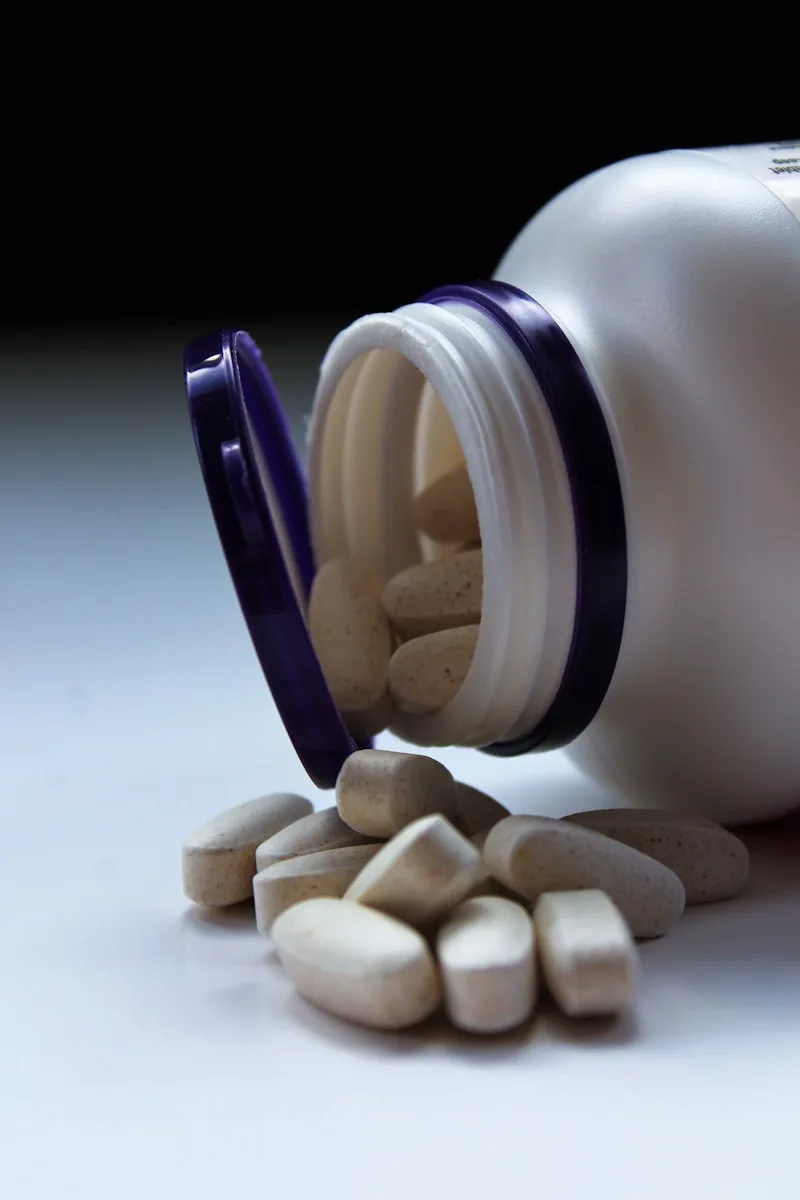
Table of Contents
It’s common to feel confused or overwhelmed by what we see about health on TV, the Internet, the news, and even our own friends and family. Something that should be simple becomes complex and complicated very quickly. This may seem a bit unrealistic when you consider that each person’s body is unique and has different demands. That being said, your body can “communicate” with you if you know what to look for. Here are some specific indicators of vitamin deficiency, along with suggestions on how to meet your dietary needs.
Read: 3 Vitamin Deficiencies Linked to Headaches
The most common signs of vitamin deficiency (and foods to help)

Eating a nutritious diet is easy. As Michael Pollan so eloquently puts it in his book In Defense of Food, eat real food. Mostly plants. Not much. What does it mean? Real food, however, is not meal prepared from a box or food mixed with different processed ingredients. Make sure most of the foods you eat are plant-based and/or plant-based products; This includes eating more fruits, vegetables, beans and legumes. Finally, try not to overeat. Overdoing any diet can make it less healthy.
Although it’s something we should all do, life has a way of getting in the way occasionally. Our bodies don’t always absorb some nutrients the same way as others. Alternatively, maybe you just developed bad habits and need to change them. Whatever the cause, your body will alert you if there is a nutritional deficiency.
Read: Autoimmune disease may be prevented by vitamin supplements, study finds
1) Bumpy skin

Bumps on your skin, such as your arms, buttocks, thighs, or cheeks, that are often red or white can be a sign of keratosis pilaris, a skin disease that usually goes away in adulthood. Research has shown that clumps are caused by an overproduction of keratin in the hair follicle, although the exact source is unknown. Some people are born with keratosis pilaris due to genetics. However, research suggests that individuals with keratosis pilaris symptoms may not be getting enough vitamins A and C in their diets, as reported by the National Academies of Sciences, Engineering and Medicine.
Foods to add to your diet:

- Dairy
- Eggs
- Fish
- Dark leafy greens (contains provitamin A/beta carotene)
- Organ meats
- Yellow-orange vegetables (contains provitamin A/beta carotene)
- Citrus fruits (lemons, limes, oranges)
- Acerola cherries
- Guavas
- Kale
- Broccoli Kiwis
2) Brittle nails and weak hair

There are many explanations for these symptoms, but a deficiency of biotin or vitamin B7 has received particular attention. Individuals who have digestive problems, are pregnant, smoke, or drink heavily are prone to vitamin B7 deficiency. (3) Furthermore, foods that cause this deficiency can be eaten. For example, avidin, a protein that binds to vitamin B7 and slows its absorption, is present in raw egg whites. Eating uncooked egg whites can cause this deficiency.
Foods to add to your diet:

- Organ meats
- Fish
- Meat
- Dairy
- Egg yolks
- Spinach
- Nuts
- Seeds
- Broccoli
- Sweet potatoes
- Whole grains
- Bananas
- Cauliflower
3) Restless leg syndrome (RLS)

Restless leg syndrome, also known as Willis-Ekbom disease, is a neurological system disorder that causes symptoms including burning or itching in the lower body, general sensory discomfort, and a constant urge to move. According to the National Institute of Neurological Disorders and Stroke, women are twice as likely as men to have RLS, which affects 10% of Americans. Iron deficiency is the most prevalent deficiency associated with RLS. According to several studies, low blood iron levels have been linked to increased symptoms of restless leg syndrome. (6,7) Pregnant women are frequently deficient in iron because levels can drop significantly during pregnancy.
Foods to add to your diet:

- Meat
- Poultry
- Fish
- Dark leafy greens
- Nuts
- Seeds
- Whole grains
Read: Harvard nutritionist shares No. 1 vitamin for brain health
4) Bleeding gums

If you floss regularly, your gums may stop bleeding. But bleeding gums can also be caused by vitamin C deficiency. Vitamin C is not produced by the body itself. If your levels are insufficient, your body is deprived of the immune-stimulating, wound-healing, and antioxidant benefits of vitamin C. You can always improve your condition even if consuming a few fruits and vegetables every day is enough to meet your vitamin C requirements. Since it is a water-soluble vitamin, excessive intake is not a concern, especially when consumed through food.
Foods to add to your diet:

- Blackcurrants
- Citrus fruits (e.g., oranges, limes, and grapefruit)
- Berries
- Kiwi
- Tomatoes
- Broccoli
- Sprouts
5) Dandruff and flaky skin

Seborrheic dermatitis (SD) is a skin condition that affects the oil-secreting areas of your body. Dandruff and peeling skin (on the face, groin, armpits, and chest) are common in individuals with SD and usually appear soon after birth, throughout adolescence and adulthood. In fact, seborrheic dermatitis is so widespread that 42% of newborns and 50% of adults will likely experience it at some point in their lives. (11) While studies have linked SD to deficiencies in zinc, vitamin B2 (riboflavin), vitamin B3 (niacin), and vitamin B6 (pyridoxine), the exact relationship is still unclear. Fortunately, you can boost your levels by eating a nutrient-dense diet.
Foods to add to your diet:

- Whole grains
- Poultry
- Meat
- Seafood and fish
- Eggs
- Dairy
- Legumes
- Green leafy vegetables
- Starchy vegetables
6) Mouth ulcers

Canker sores, or ulcers in or around the mouth, can be caused by a deficiency of certain minerals, especially iron or B vitamins. Researchers found in one study that low iron levels were twice as common in those with mouth ulcers. (14) Another study found that vitamin B1, B2, and B6 deficiencies were associated with oral ulcers in 28% of patients.
Foods to add to your diet:

- Poultry
- Meat
- Fish
- Legumes
- Dark leafy greens
- Nuts
- Seeds
- Whole grains
- Green vegetables
- Starchy vegetables
- Dairy
Read: Researchers find that brains with more vitamin D function better
7) Constipation

Your body is trying to tell you something when it backs up and you don’t have more than three bowel movements a week. In general, however, there is a really simple and quick solution. The US Department of Agriculture estimates that men and women eat only half of the recommended 38 grams of fiber per day. (16) A meta-analysis showed that a high dietary fiber intake can undoubtedly increase stool frequency in constipated patients. (17) More research has shown that those who suffer from constipation may benefit from taking more magnesium.
Foods to add to your diet:

- Flaxseeds
- Broccoli
- Apples
- Lentils
- Figs
- Prunes
- Spinach
8) Leg bruising

When you look down, you have a bruise on your leg and you don’t know how it got there? It looks like you rubbed off easily. Medical experts speculate that you may be deficient in vitamin C, which is essential for the synthesis of collagen. As a result, it facilitates the development of blood vessels. Vitamin C deficiency can damage the capillaries in your body, increasing your risk of bruising.
Foods to add to your diet:

- Citrus fruits
- Strawberries
- Broccoli
- Brussels sprouts
- Cauliflower
- Green and red peppers
- Spinach
- Cabbage
- Mango
9) Fatigue

No matter how much sleep you get, if you’re constantly tired, your body doesn’t have enough vitamin D. Fatigue, sadness, hair loss, muscle, bone and back pain are some of the signs of vitamin deficiency. However, in a double-blind, randomized, placebo-controlled study, scientists discovered that vitamin D was effective in reducing fatigue in otherwise healthy people.
Foods to add to your diet:

- Fatty fish (e.g., tuna, mackerel, salmon)
- Fortified soy and almond milk
- Cheese
- Egg yolks
- Mushrooms
10) Calf cramps

Low magnesium levels are commonly the cause of calf and other muscle discomfort. Muscle contraction is one of the more than 600 cellular processes involving this “miracle mineral.” Yet, magnesium deficiency affects nearly 70% of American adults. (21) Since calcium interacts with certain proteins to cause muscle contraction, magnesium acts as a natural calcium blocker to help muscles relax. (22) Your calf muscles, along with other muscles, can contract excessively if they don’t have enough magnesium to compete with calcium, leading to cramps.
Foods to add to your diet:

- Pumpkin seeds
- Spinach
- Swiss chard
- Black beans
- Flaxseeds
- Almonds
- Cashews
- Dark chocolate
- Avocado
- Tofu
- Salmon
READ | Eat foods high in vitamin B if you want to grow hair.
READ | “Signs of Dementia: Experts Warn About This Eating Habit”


2 thoughts on “10 Signs of Vitamin Deficiencies and How to Treat Them”